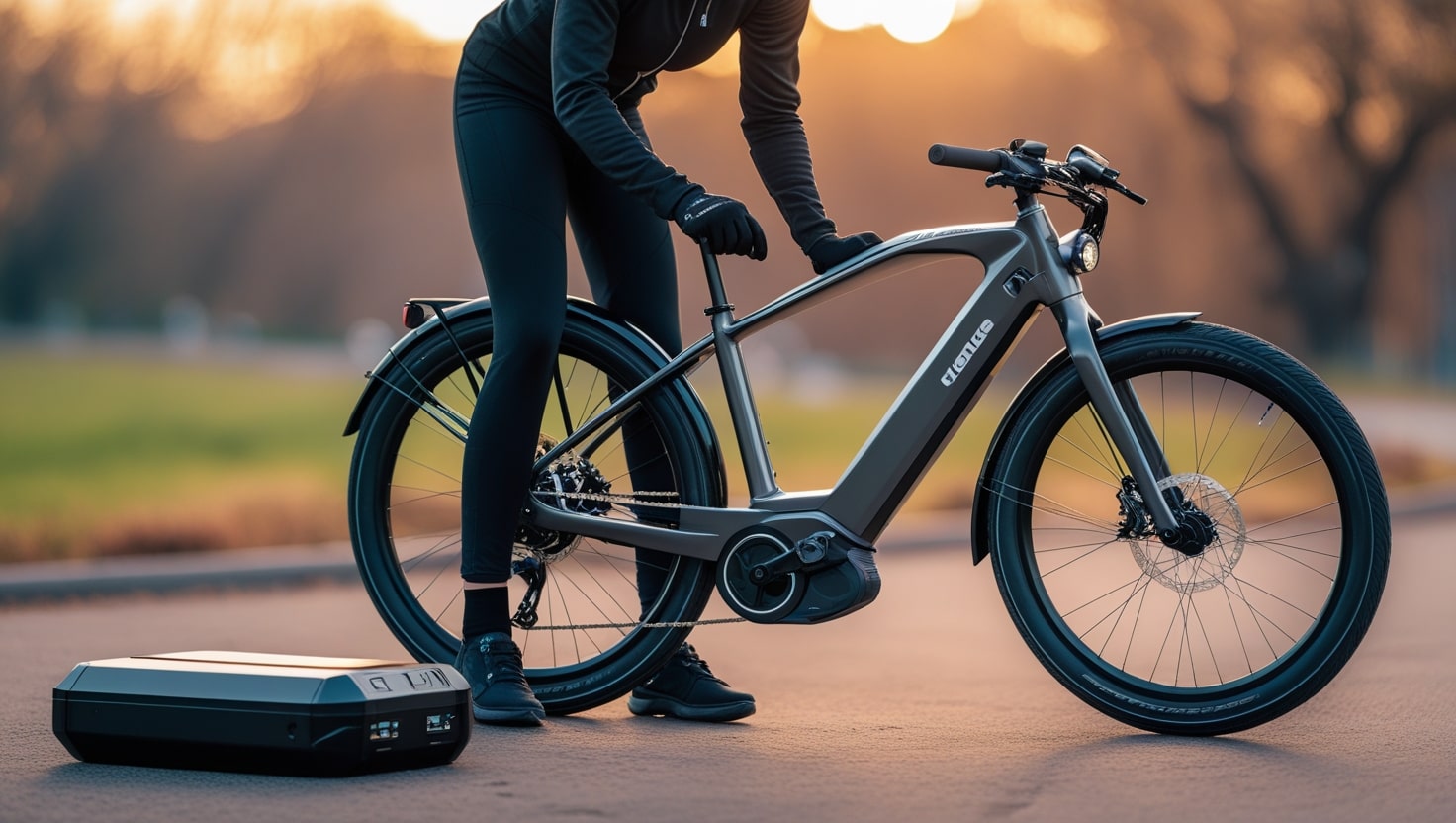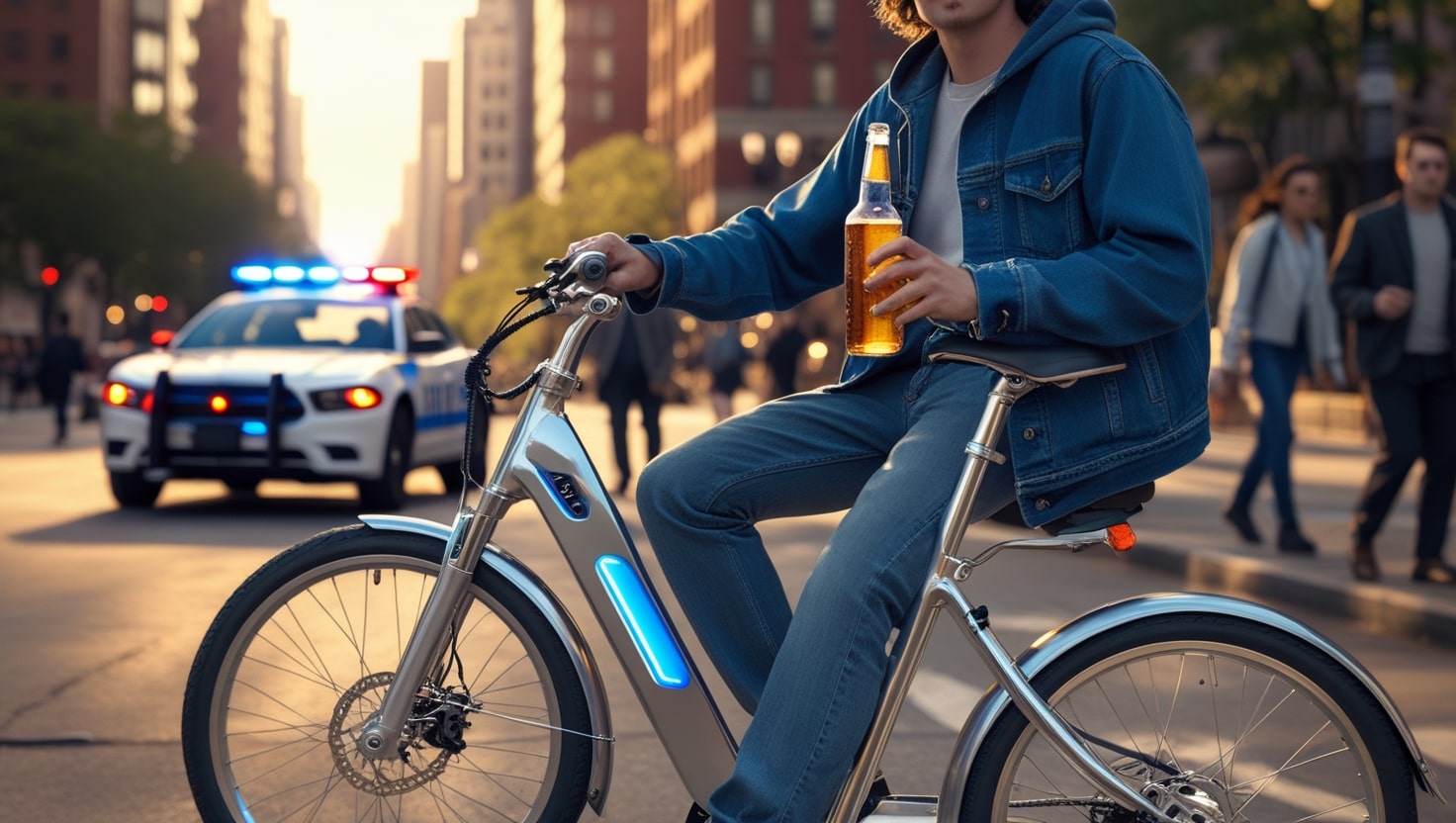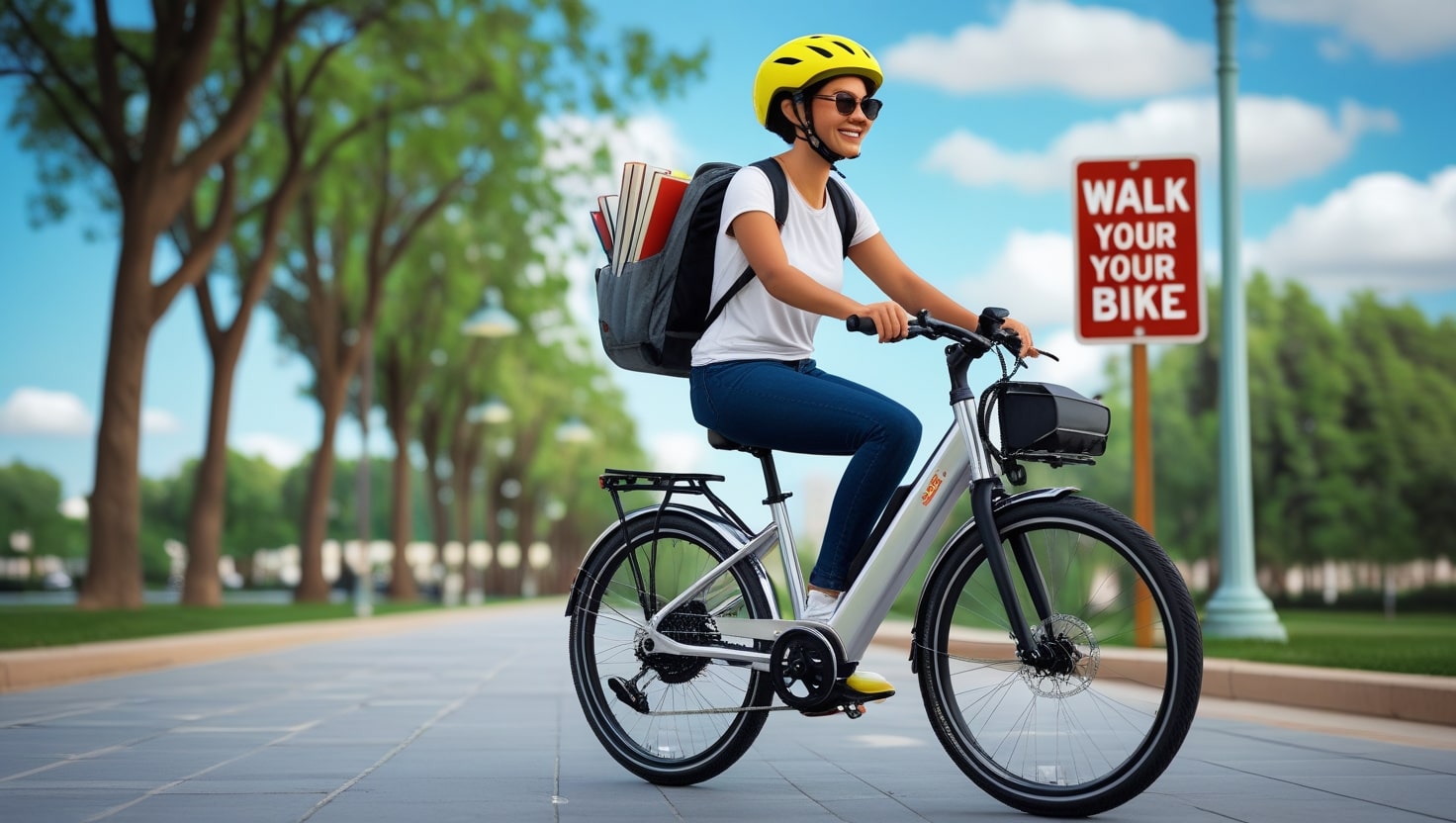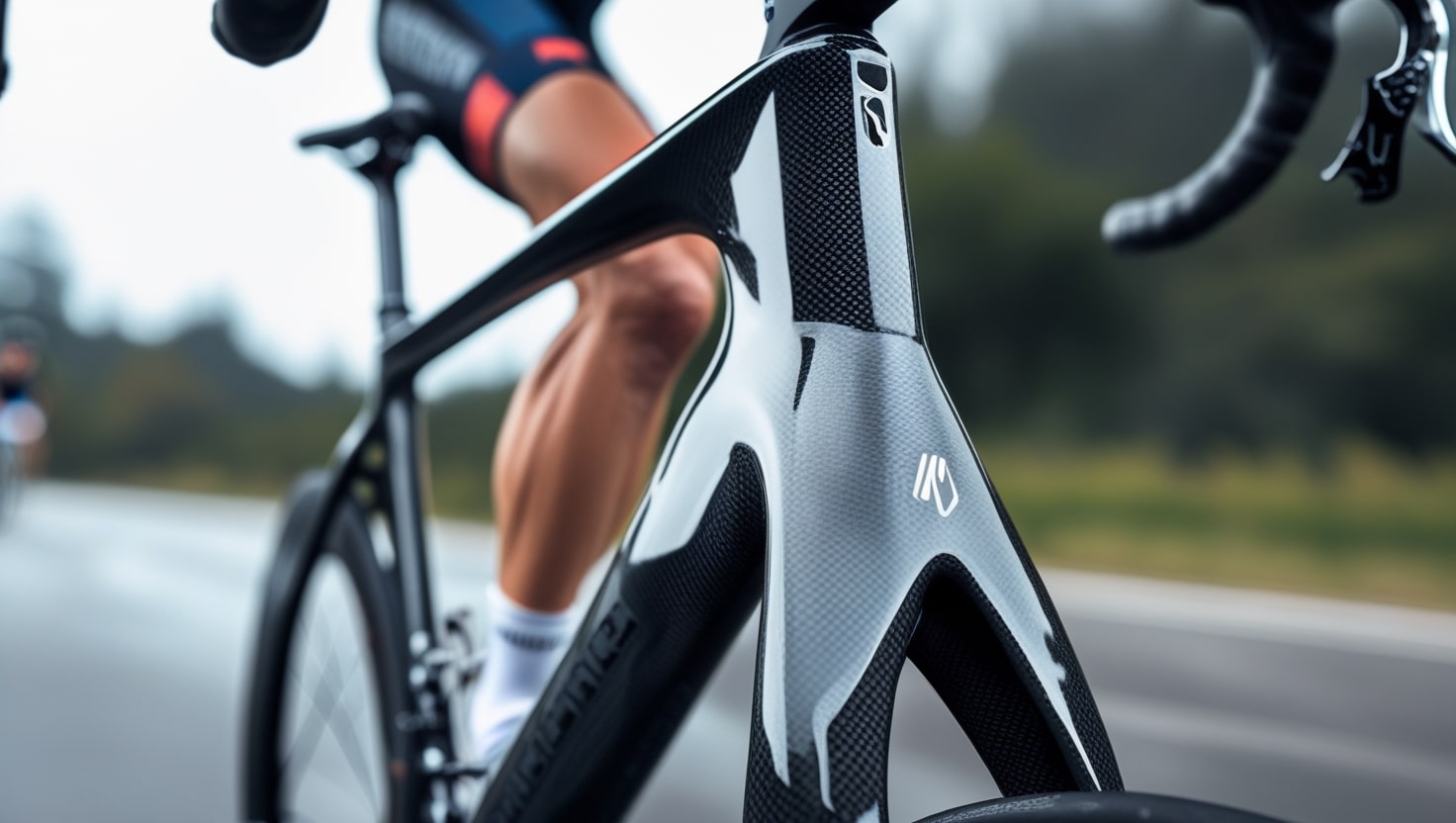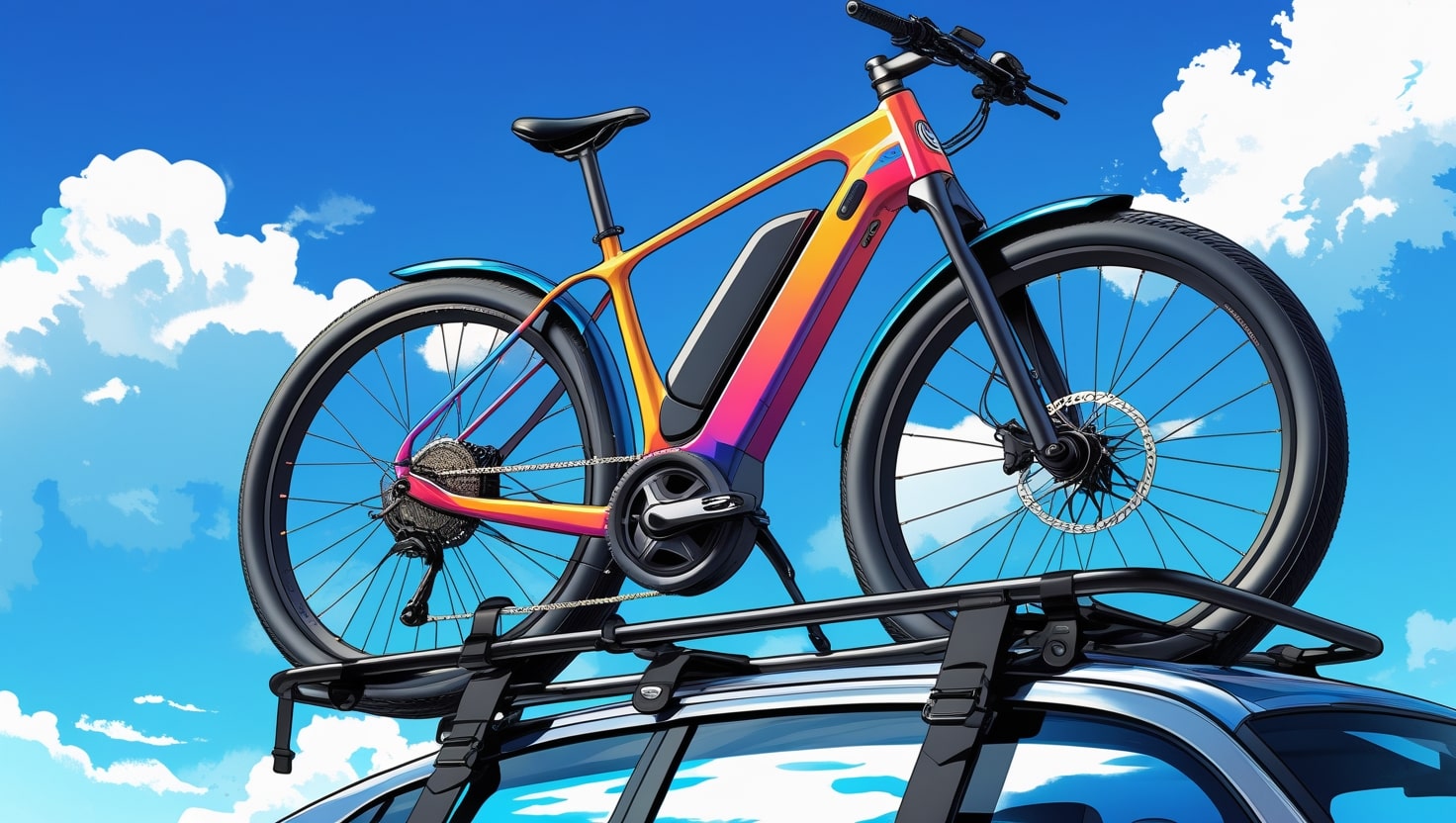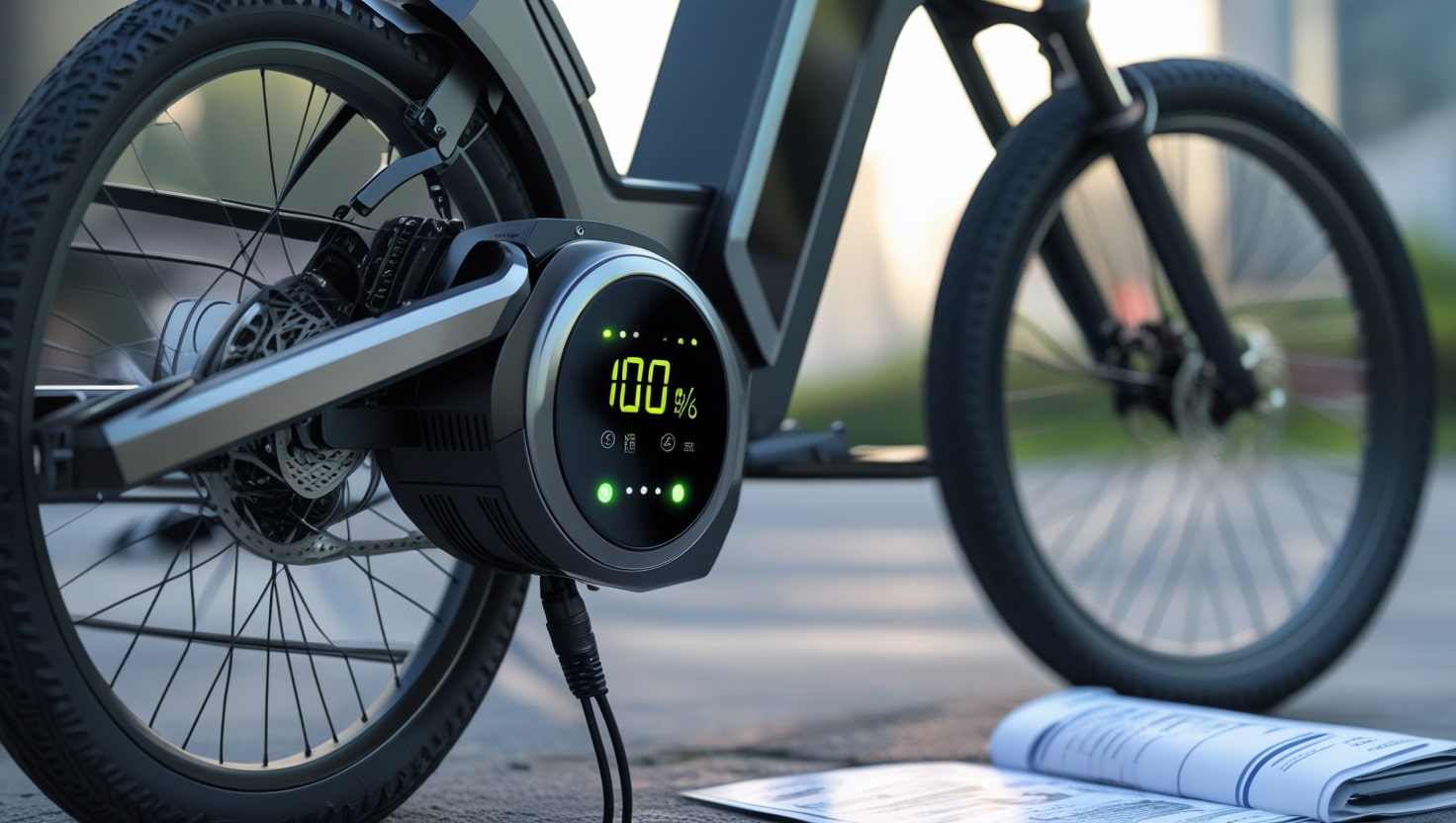From my own experience as an e-cycling enthusiast, I’ve found that riding an e-bike without its battery is definitely possible—and the short answer is yes. But let’s honestly discuss what that means in real-world terms. While can you ride an ebike without the battery, doing so isn’t always recommended. There are pros and cons to consider: on one hand, removing the battery makes the bike lighter and can be useful when the charge is low or during transport; on the other hand, pedaling an e-bike without motor assistance isn’t as comfortable, especially uphill.
I’ve tried riding e-bikes both with and without power, and generally, the added resistance makes a noticeable difference. The decision to ride without power really depends on your route, fitness level, and how often you plan to go riding this way.
Situations That Necessitate Removing the E-Bike’s Battery:
As someone who often explores high-altitude trails, I’ve had to remove the battery from my e-bike more than once. On one trip, I needed to reach the top of a mountain using a chairlift, but my bike exceeded the weight limit due to the battery. In such cases, removing it becomes necessary.
Travelers might also encounter similar issues when trying to bring their e-bikes on airplanes, where safety rules don’t allow batteries onboard because of short circuit risks. The priority for staff is the lives of passengers, and they won’t risk it for any number of reasons. That raises the question—what do you do if you arrive at your destination without a battery?
From what I’ve done and seen, some people prefer to buy a new battery from a local shop once they reach their destination and then install it on their bike. But if you’re into cycling for fitness like I am, riding without the battery isn’t always a problem. I’ve gone on practice rides where I simply forgot to turn on the switch, or the battery just died. In those moments, I didn’t mind continuing to ride—it was a good way to improve my physical health and push my limits.
The main function of the motor on an e-bike is to help you go faster while using less effort. But if you remove the motor support, every bit of speed becomes the result of your own efforts. Many riders do this intentionally to obtain better endurance and burn more calories. In fact, utilizing your own strength during a ride can be a satisfying challenge if you’re looking for progress in your fitness journey.
Of course, there are days when the comfort of assisted riding is just what you need—especially after a long day. But it’s important to understand that there are times and places where you simply can’t rely on a battery, and knowing how to handle those situations is part of being a prepared rider.
How Does it Feel to Paddle an E-bike Without a Battery
When I first tried removing the battery from my e-bike and taking it for a spin, I honestly didn’t expect such a noticeable difference. Going uphill was the real test—without the motor’s help, every push demanded much more energy. My legs were burning as I relied fully on my muscles, and it wasn’t long before I felt completely tired.
The force I had to use to keep going made me break into a heavy sweat, and my speed dropped. The same distance that would normally fly by took nearly double the time, and the effort felt more intense when compared to a battery-assisted ride.
However, while traveling through an elevated area down to a lower path, things were more manageable. You don’t feel as much of a struggle when the terrain favors you, but it still isn’t the same. The consequences of riding an e-bike without its battery really show when the route involves any climb or extended ride.
Is There Any Good Side of Riding the E-bike Without Any Battery
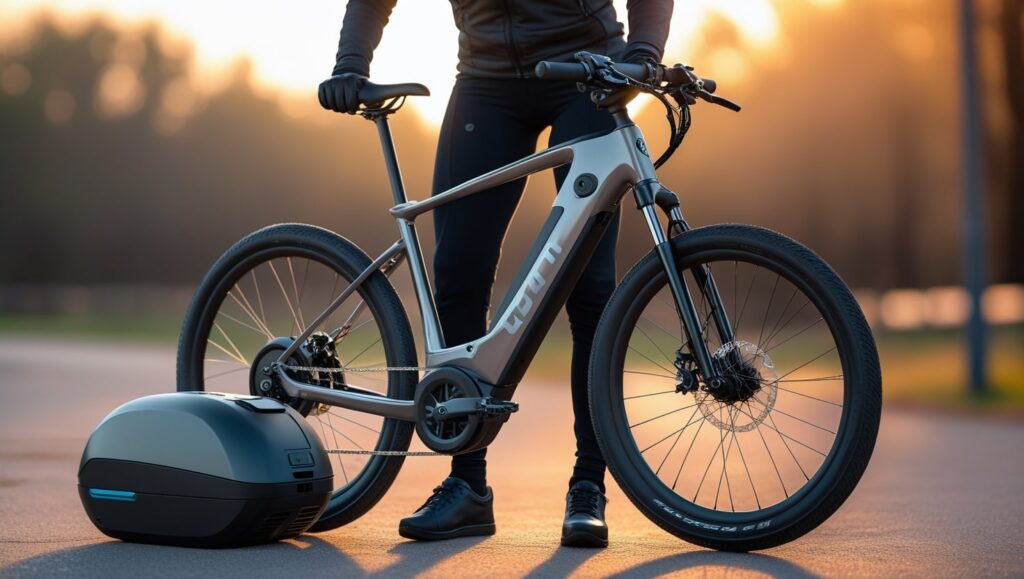
From personal experience, I’ve noticed that riding a bike without a battery can actually feel great in certain situations. When you’re out on a mountain trail full of jumps, jolts, and uneven ridges, going battery-less makes the bike feel incredibly light, which helps you glide more smoothly.
As you remove the battery, the loss of weight can even boost your confidence, especially if you’re navigating tight downhill paths. While it’s true that pedal effort increases, the momentum from moving downhill often compensates for the missing motor support, still giving you a sense of comfort during the ride.
Tips for Riding a Bike Without a Battery:
When I ride my e-bike without the battery, I always make sure the battery spot is clean and safe, especially if I plan to get it installed back later. It’s important to avoid any dust or moisture so the connection stays intact. During the ride, if pedaling gets tough, I switch between gears to ease the effort. Trying out different settings helps me figure out what suits my terrain and energy best. It takes a bit of trial and error, but once you get used to it, you’ll find the best way to pedal efficiently even with no motor support.
Tips for Prolonging the Battery Life:
In my years of using e-bikes, I’ve learned that batteries are sensitive and need proper care if you want them to last. Never let your battery drop to 0%, and always charge it when the power level is low or when you see a warning signal. It’s just as important not to overcharge it—once it’s full, unplug it. To avoid draining the battery too fast, I like to alternate between different riding modes, especially when I’m carrying heavy weight on the bike.
Is It Possible to Ride an E-Bike Without the Battery?
Yes, you can definitely ride an e-bike without the battery, and I’ve done it myself more than once. When the battery is dead or removed, the bike doesn’t shut down completely—you can still pedal it like a regular bicycle. But the ride will feel different. E-bikes are usually heavier than normal bikes because of the motor and other electric parts, so pedaling can become harder, especially on uphill paths or during longer rides.
Your experience can also depend on the type of e-bike you have. Some models are designed with a backup option in mind and come with better gear systems, lighter frames, and a setup that makes riding without the battery more manageable. You won’t damage the motor, electrical parts, or other components by riding it manually—it’s simply you doing all the work instead of getting that little push from the electric side.
Does Removing the Battery Harm the Motor
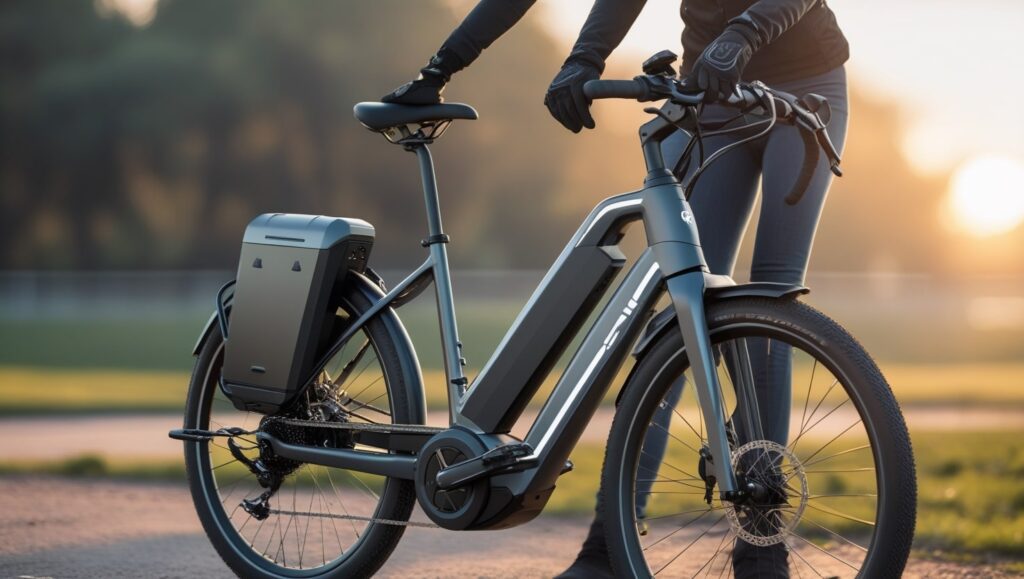
From my own experience and what I’ve learned over the years, removing the battery from an e-bike does not affect the motor at all. The purpose of the battery is to provide power to the motor so it can increase your speed, but if there’s no battery, the motor simply won’t be activated—and that’s not an issue.
The bike still works just like a normal cycle, and your speed depends entirely on how hard the rider pushes the pedals. The only effect is that you’re using more of your own energy instead of letting the motor do the work.
What Hinders the Pedaling in the Absence of the Battery
From my own rides, I’ve found that riding an e-bike without the battery isn’t always smooth sailing. Some versions might feature motors that provide resistance without the battery, which would make it more difficult to pedal smoothly and possibly slow you down.
These technical factors contribute to making the ride feel hard, especially when you’re already putting in a lot of effort and relying only on your power. Beyond the machine itself, the surface plays a big role too—a smooth road lets you move comfortably, but on a ragged mountain path, the lack of motor help really shows no mercy.
The rider’s health is another important factor to consider. A muscular and fit person will naturally perform better than someone who is weak or exhausted. Even your mindset matters when the absence of help changes the way you experience pedaling—and trust me, I’ve felt the difference between a breezy coast and grinding through a climb under your own strength.
Tips for Riding an E-Bike Without a Battery
Use low gears: Shift to low gears when riding uphill to make pedaling easier and reduce strain on your legs.
Keep your tires inflated: Always keep your tires properly inflated to maintain the right pressure. This lowers rolling resistance and makes your bike more efficient, especially when you’re riding without electric support.
Clean and cover the battery port: Make careful to clean and cover the port to keep dust, grime, and water out if you’re riding the e-bike without a battery. An empty port left open can collect debris that affects future connections.
Travel light: Don’t load your bike with heavy gear when you’re already working harder to pedal. Keeping your setup light helps conserve effort on longer stretches.
Start with short rides: If you’re new to manual e-biking, start with short rides or shorter trips to feel the difference.
Also Read: How Fast Does a 1000W eBike Go?
Are Some E-Bikes Better for Riding Without the Battery?

From my time testing different e-bikes, I’ve learned that not all are equal when riding without a battery. Some bikes are far more manageable due to smart design and lighter weight. Models made with aluminum or carbon frames tend to be more lightweight and better suited for battery-free rides. In urban areas, I’ve seen city and commuting e-bikes handle quite well without motor assist, especially if they’re built with balanced frame geometry and a low center of gravity. Brands like Fiido, for example, focus on urban performance and keep their bikes nimble and well-balanced even when unplugged.
A key factor is the gear system. A 7-speed or multiple-gear setup makes a huge difference when you need to adjust for changing terrain or hills. I’ve noticed how a wide range of gears helps you reduce the strain and gives more control when you pedal without electric power.
Then there’s the question of weight distribution. E-bikes that carry their motor and battery low and evenly across the frame give you a steady feel. This type of setup feels more forgiving when the assist isn’t there. It’s one of those often-overlooked factors, but it really does help make the ride smoother and more efficient when going battery-free.
How to Make Riding Without a Battery More Comfortable
By making a few little adjustments, you may significantly lessen the physical strain on your body when riding an e-bike without a battery.
Lower your gear: Switching to a lower or lowest gear will reduce the effort you need to pedal, especially on hills, making riding without assistance more manageable.
Check your tire pressure: Make sure each tire is properly inflated. Good pressure allows your tires to roll more smoothly, cutting down on force and improving your ride quality.
Lighten your load: Remove any extra cargo or unnecessary accessories to make the load lighter. A lighter bike makes a big difference, especially on longer trips.
Keep your chain and drivetrain clean: A clean, well-maintained chain and drivetrain keep things running smoothly. You’ll feel a real noticeable improvement in how easily you can pedal.
Adjust your seat height: Proper seat and saddle height can help you pedal more efficiently and stay comfortable on longer rides.
Final Words
If your battery has died, or you’re traveling without it, you can still ride your e-bike like a regular bike with just a bit more effort. I’ve done many longer rides this way, especially through hills, and while it’s tougher, it’s also a great form of exercise. Some models are definitely easier to handle than others when the motor isn’t available, so it helps to know your bike’s setup.
A few smart tips, like choosing the right route and going slow, can really improve your experience. Just plan ahead, and remember that riding without assistance is always an option worth considering—even when you’re just looking to change things up.
FAQs
Can pedaling charge an e-bike battery?
Many riders ask if pedaling can charge the battery on e-bikes, but in most regular models, that’s not a built-in feature. Only some high-end models come with regenerative braking, which can send a bit of energy back into the battery when slowing down.
Is it bad to leave the battery out?
From what I’ve seen with my own e-bike, it’s perfectly fine to have the battery removed as long as you take proper care of the slot it fits into. The key is keeping that area clean and dry so no moisture or debris interferes with the electrical connection when you reinstall it.
Do all e-bikes allow riding without the battery?
In most cases, bikes can still be pedaled even when the battery is removed, though some may create more resistance depending on the motor and how the drive system is built.
Can you use gears without the battery?
Absolutely—gears still work perfectly fine even without the battery or motor power. From my own rides, I often shift through different levels to make pedaling feel easier, especially when climbing hills or starting from a stop.
Should I remove the battery if I don’t need it?
If you’re aiming for a good workout or trying to reduce your body weight, removing the battery can be a great idea. Without motor assistance, you’ll have to pedal much harder and often for a longer time, which naturally increases your physical effort.

